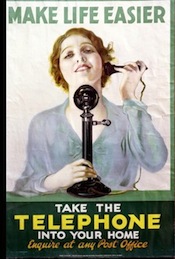
But not at any price, luv.
Last month, British Telecom rolled out a fiber-to-the-home offering that relied on just over half of its users paying somewhere in the $1,000 to $2,300 range for installation, and the rest paying more. Now PC Pro, a UK-based newsletter, reports that BT is backing away from its previous goal of getting FTTH into 25% of its subscriber’s homes.
The report quotes a BT source as linking the pull back to success with its fiber-to-the-cabinet (FTTC) offerings, which are already touted as being in the 40 to 80 Mbps range and could soon go as high as 100 Mbps. It’s similar to the technology and speed targets AT&T has picked for its Uverse service, where copper lines connect homes to neighborhood fiber nodes, usually located in cabinets installed along the street.
A sub-25% market target is consistent with research done last year in Palo Alto, and that I used to model a similar user-financed FTTH feasibility analysis. At a monthly rate in BT’s range – $60 per month – 26% of homes would subscribe if the upfront cost were $1,000, but only 17% at $2,000 and not quite 7% at $3,000. BT isn’t revealing its new FTTH subscriber target, but walking BT’s pricing through Palo Alto’s price sensitivity numbers gives a ballpark take rate in the 10% range.
The key similarity between BT’s territory and Palo Alto – and, incidentally, Provo – is that Internet service in the 10 Mbps to 100 Mbps range is readily available, from BT itself and from AT&T and Comcast in California. Speed and price matter to consumers. Technology, not so much.
